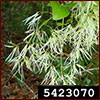The Neighborhood Gardener – February

Happy gardening!
Gardening with Succulents
 Gardeners, especially beginners or those with busy schedules, can't go wrong with a succulent garden. This low-maintenance group of plants includes cacti, aloe, agaves, sedums, and "hens and chicks". Succulents have thick, fleshy stems, leaves, or roots designed to hold water. In Florida's rainy, humid climate, most grow best in containers. Choose a few succulents with contrasting forms and place them in well-drained media with room to grow. More
Gardeners, especially beginners or those with busy schedules, can't go wrong with a succulent garden. This low-maintenance group of plants includes cacti, aloe, agaves, sedums, and "hens and chicks". Succulents have thick, fleshy stems, leaves, or roots designed to hold water. In Florida's rainy, humid climate, most grow best in containers. Choose a few succulents with contrasting forms and place them in well-drained media with room to grow. More
The New Gardening Solutions App
 The University of Florida has released a new gardening app created to help homeowners stay on top of their lawn and garden maintenance. The Gardening Solutions app provides Florida residents with the ability to create a personalized virtual landscape. The app will send helpful maintenance notifications to users, based on their zip code and the plants in their virtual landscape.
The University of Florida has released a new gardening app created to help homeowners stay on top of their lawn and garden maintenance. The Gardening Solutions app provides Florida residents with the ability to create a personalized virtual landscape. The app will send helpful maintenance notifications to users, based on their zip code and the plants in their virtual landscape.
Plant of the Month: Fringetree
 Fringetree is a small deciduous tree that bursts into bloom in the spring. The flowers are composed of narrow, ribbon-like petals that are snowy white. As part of the olive family, female fringetrees will produce dark, olive-like fruits that are attractive to birds. Fringetrees are easy to care for and grow well in North and Central Florida. The ideal location for your fringetree is an area where it will receive sunlight through most of the day and some shade during the afternoon. More
Fringetree is a small deciduous tree that bursts into bloom in the spring. The flowers are composed of narrow, ribbon-like petals that are snowy white. As part of the olive family, female fringetrees will produce dark, olive-like fruits that are attractive to birds. Fringetrees are easy to care for and grow well in North and Central Florida. The ideal location for your fringetree is an area where it will receive sunlight through most of the day and some shade during the afternoon. More
February in Your Garden
Most roses should be pruned this month to reduce their size and improve their form. The exception are some of the old fashioned roses that may need only a light grooming. After pruning, fertilize and apply a fresh layer of mulch. Blooming will begin eight to nine weeks after pruning.
For more month-by-month gardening tips, check out the Florida Gardening Calendar. Three different editions of the calendar provide specific tips for each of Florida's gardening regions—North, Central, and South.
Friend or Foe? Neither: Armadillo
 Armadillos are prehistoric-looking mammals that are often considered a pest because their "rooting" behavior damages lawns, vegetable gardens, and flower beds. Less noticeable but more destructive are their burrows when dug under foundations, driveways, or other structures. But they are more of a nuisance than a true garden foe. Armadillos are also beneficial because they eat adult insects and larvae. Recommended methods of control include live-trapping, creating barriers such as fences, and reducing over-watering and fertilizing to cut down on insect pests, their food source. More
Armadillos are prehistoric-looking mammals that are often considered a pest because their "rooting" behavior damages lawns, vegetable gardens, and flower beds. Less noticeable but more destructive are their burrows when dug under foundations, driveways, or other structures. But they are more of a nuisance than a true garden foe. Armadillos are also beneficial because they eat adult insects and larvae. Recommended methods of control include live-trapping, creating barriers such as fences, and reducing over-watering and fertilizing to cut down on insect pests, their food source. More
Do You Have a Success Story?
We're looking for inspiring, Florida-Friendly success stories from your county. Submit yours today to Emily Eubanks.
What's Going On?
If your Master Gardener program or Extension office is having an event, be sure to share it with us.

